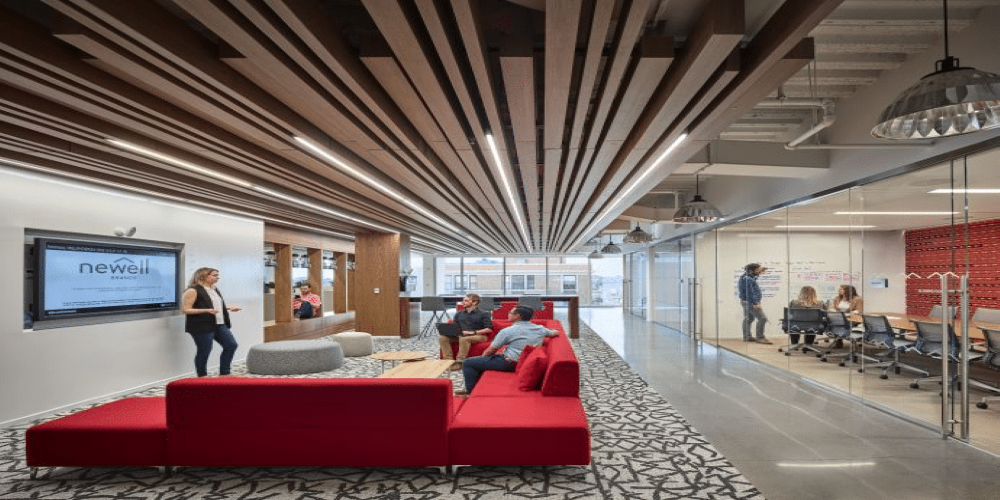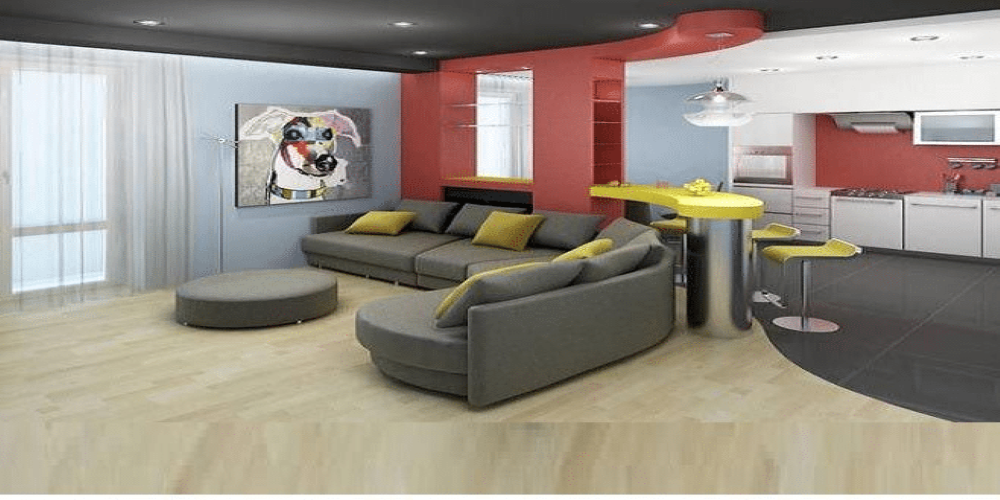
11 Aug What are the Benefits of Resimercial Design?
Like most things in life, there are some wholeheartedly in favour of resimericial design, and of course, those who aren’t.
But, what is it?
On a basic level, it’s the merging of interior design features and aesthetics from residential homes and commercial office spaces, for that home from home vibe. In theory, this holistic design style seeks to benefit the person behind the worker, once they step across the threshold into the office.
Technology means that employees can work pretty much wherever their Wi-Fi allows, whether that be in bed, in the back garden or the local Starbucks.
However, as many of us have discovered in recent months, working from home means one isn’t able to enjoy daily interactions with colleagues, which can create a feeling of cabin fever.
What Does Resimercial Design Achieve?
The most important objective, which both employer and employee can agree, is that one should be able to work in an environment that increases productivity, inspires innovation and improves employee wellbeing.
Remote working has increased exponentially over the past decade – more so with the situation we find ourselves in with COVID-19 – and a recent study confirms that only 6% of the UK are working on a strict 9-5 timetable. Resimercial design looks to capture the best of both worlds; bringing optimum comfort, multi-functional break out areas, and all the tools required to make the best of the job at hand – which naturally compels employees to want to work more often within the confines of the office.
The only place we have to do as we wish, is within the comfort of our own home, and by introducing home comforts such as furniture and décor, you’re subconsciously reminded of being in that reassuring, soothing space.
On average 12.8 million days were lost in the period of 2018-19 due to work-related stress, depression and anxiety, which means it’s certainly in the best interests of an employer to ensure that their space is as stress-free as possible.
Benefits of Resimercial Design

Image from Newell ‘s Brands
Effective resimercial design opens out the office to natural daylight and encourages employees to sit where is most comfortable, which means there are no set desks if that’s what the individual employee prefers.
That said, the professional aspects of the office are still incredibly important, such as practical lighting, uncluttered space, meeting rooms and areas that are conducive to collaboration, ideas and productivity.
The example above is from the offices of the commercial organisation Newell’s Brands in Hoboken, New Jersey. Each of the three floors is uniquely decorated to demonstrate the company’s culture and brand image.
When visitors arrive at reception, which we see above, they are greeted with attractive hardwood flooring and wooden beams dropped out of the ceiling, which create a sense of intimacy and warmth. There are also several large seating areas, which certainly wouldn’t be unwelcome in a typical sitting room, and the entire space is flanked by floor to ceiling glass partitions, which draw in plenty of natural daylight.
Design Features of the Resimercial Workplace
Employees, these days, are increasingly asked to be more flexible at work, with many roles becoming more dynamic, which leads to greater reliance on employees than ever before.
Many corporations are beginning to understand the benefits of creating a more homely atmosphere at the office. This typically involves incorporating tactile textures, flooring which promotes feelings a calm and comfort, and, as we’ve already mentioned, large, comfortable areas where employees can gather together to discuss their ideas.
When it comes to innovative design that runs parallel to human requirements, resimercial design perfectly captures those feelings of domestic life. Implementing multifunctional furniture and design that offers comfort, familiarity and informality softens the blow of having to leave that domestic safety and head out into the world on a daily basis.
Also introducing greenery, an already well established technique for helping to increase the productivity and wellbeing of those occupying the space, and other elements of biophilic design in the workplace is another way of helping an employee feel calm and motivated.
Zoning

Image from Pinterest
An increasing trend within resimercial design is to open out space by removing internal walls that may create a feeling of darkness and claustrophobia, as this doesn’t necessarily replicate the multifunctional way we use our rooms at home.
In order to ensure there is some kind of differentiation, many designers are using “zoning” to create delicate boundaries between spaces. For example, this could be done by using a different flooring, or wall décor to differentiate the purposes of each space.
Raised flooring is another ideal technique here, as multi-level flooring can help to facilitate a separation between zones. Carpet tiling, such as the kind we used in our recent project with the Papworth Trust, is also ideal as it can be removed and installed easily, which helps to maintain the flexibility that this design style is known for.
If you’d like to learn more about resimercial design, or you’re interested in any of our other services, don’t hesitate to contact us for more information.

Sorry, the comment form is closed at this time.